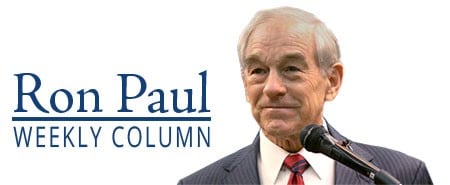
Breaking News
 "A Very Good, Early Step" - Trump Announces Meeting Between Putin and Zelensky...
"A Very Good, Early Step" - Trump Announces Meeting Between Putin and Zelensky...
 Comer Discloses Some Details From Bill Barr's Deposition Related to Epstein Investigation (VIDEO
Comer Discloses Some Details From Bill Barr's Deposition Related to Epstein Investigation (VIDEO
 ADU Fever: Inside The Backyard Housing Boom In California
ADU Fever: Inside The Backyard Housing Boom In California
 How Much Energy Does ChatGPT's Newest Model Consume?
How Much Energy Does ChatGPT's Newest Model Consume?
Top Tech News
 Chinese Scientists Produce 'Impossible' Steel to Line Nuclear Fusion Reactors in Major Break
Chinese Scientists Produce 'Impossible' Steel to Line Nuclear Fusion Reactors in Major Break
 1,000 miles: EV range world record demolished ... by a pickup truck
1,000 miles: EV range world record demolished ... by a pickup truck
 Fermented Stevia Extract Kills Pancreatic Cancer Cells In Lab Tests
Fermented Stevia Extract Kills Pancreatic Cancer Cells In Lab Tests
 3D printing set to slash nuclear plant build times & costs
3D printing set to slash nuclear plant build times & costs
 You can design the wheels for NASA's next moon vehicle with the 'Rock and Roll Challenge
You can design the wheels for NASA's next moon vehicle with the 'Rock and Roll Challenge
 'Robot skin' beats human reflexes, transforms grip with fabric-powered touch
'Robot skin' beats human reflexes, transforms grip with fabric-powered touch
 World's first nuclear fusion plant being built in US to power Microsoft data centers
World's first nuclear fusion plant being built in US to power Microsoft data centers
 The mitochondria are more than just the "powerhouse of the cell" – they initiate immune...
The mitochondria are more than just the "powerhouse of the cell" – they initiate immune...
 Historic Aviation Engine Advance to Unlock Hypersonic Mach 10 Planes
Historic Aviation Engine Advance to Unlock Hypersonic Mach 10 Planes
 OpenAI CEO Sam Altman Pitches Eyeball-Scanning World ID to Bankers
OpenAI CEO Sam Altman Pitches Eyeball-Scanning World ID to Bankers
Another Reason to Ban Tik-Tok?

Markets rose following the release of the CPI since the increase in price inflation was not as high as expected. This led to an increase in expectations that the Federal Reserve will cut interest rates next month.
Of course, the CPI numbers are manipulated to understate the true rate, and effects, of inflation. One way this is done is by "Chained CPI." This is where the government does not consider consumers impacted by price increases that make their favorite products unaffordable if there are affordable substitutes available – as if government bureaucrats can determine what is and is not an adequate substitute for a good made unaffordable by the Federal Reserve.
The official government figures do not take into account "shrinkflation." This is when a business responds to price inflation by reducing product size and otherwise reducing a good's quality. Shrinkflation makes it appear that consumers are paying the same prices but in fact they are paying more since they are getting less of the product.
Examples of "shrinkflation" include increases in the size of cardboard toilet paper holders by 25 percent. This allows toilet paper companies to reduce the amount of paper per roll while maintaining the same number of rolls per package.



